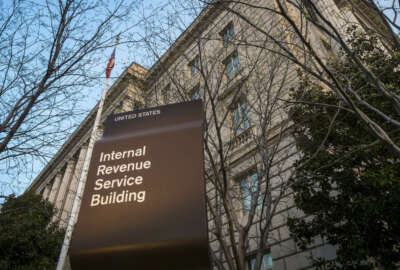
IRS predicts better customer service, workforce attrition in 2016
IRS Commissioner John Koskinen said the extra $290 million it got from Congress this year will help the agency improve customer service and identity theft and...
The IRS is confident the upcoming tax filing season will go more smoothly than the last, thanks to an additional $290 million in congressional funding this fiscal year.
The agency will use the extra dollars, in part, to hire about 1,000 customer service representatives for this tax season, IRS Commissioner John Koskinen told reporters Jan. 14. It’s the first time in the past six years that the agency has received a notable bump in funding from Congress.
“We expect the level of service on the phone to be much better than it was last year, although last year, obviously, was a low threshold ” he said. “We do expect that after April 15, we will still be able to answer phone calls. One of the things we hope to do is have people on our [pay]rolls longer. Last year, the only way we could deal with the $350 million budget cut, plus absorbing pay raises and inflationary costs, was to … have our seasonal employees work significantly less time than they had in the past, which is why after filing season many of them were laid off.”
Even with the additional $290 million — $700 million less that what the IRS asked Congress for — Koskinen said wait times on the agency’s taxpayer phone lines will still be long.
Customer service was so bad last year, Koskinen said, that “almost anything would be better.”
The Government Accountability Office suggested the IRS develop a comprehensive customer service plan to improve on those dismal results. In 2015, 38 percent of callers reached an IRS customer service representative. Taxpayers waited on average for about 30 minutes on the phone.
With that in mind, Koskinen said the agency hopes at least 60 percent of its callers will reach live assistance this tax season.
Though the IRS has more resources than it did last year, the agency is congressionally mandated to target that extra funding toward better customer service and identity theft and cybersecurity protections.
That means other aspects of the IRS operations will continue to suffer, Koskinen said. He expects the the agency will finish fewer audits this year than in previous years, because it has about 5,000 fewer audit officers and enforcement agents than it did before.
The IRS has no plans to hire back those revenue agents or other employees who have left or retired. Koskinen expects his agency’s workforce will shrink by at least 2,000 to 3,000 workers this year.
“We have to absorb the federal pay raise and other inflationary costs, which total a little over $300 million,” he said. “Over 70 percent of our budget is personnel, so while we’ve continued to work on efficiencies and trying to shrink our office footprint, etc., basically the only choice we’ve had over the last six years and will continue this year, is to not replace people when they leave.”
Better cybersecurity, private debt collection
The IRS — along with 20 industry tax organizations and 34 states — will share 20 new data elements with each other this filing season to help the agency detect identity theft and fraud.
The agreement came out of the agency’s Security Summit in October.
The IRS will look for patterns of deception as information travels back and forth this season between taxpayers, the states and the agency, Koskinen said.
Next year, the IRS will set up a more formal information sharing and analysis council (ISAC) with its state and industry partners.
“With an ISAC, the information would come in, be secure, be protected, but then people would have access to it — the states and tax preparers — in terms of real time,” Koskinen said.
The agency’s Get Transcript application, which gave the public online access to their previous tax returns, will also be up and running in the “very near future,” after the IRS finishes testing and implementing new security features for the system, Koskinen said.
The system is still offline after hackers attempted to steal personal information from at least 334,000 taxpayers last year.
Additionally, the IRS is working on its private debt collection program, which Congress mandated the agency complete in 90 days.
“We’ll be able to design the program, we think, in 90 days, but by the time we go through the procurement, the training with the companies that are selected and have it implemented, it will be some time later in the year,” Koskinen said. “But we’re going to do it as quickly as we can, because it’s a requirement from Congress and that’s always the highest priority for us.”
Copyright © 2025 Federal News Network. All rights reserved. This website is not intended for users located within the European Economic Area.
Nicole Ogrysko is a reporter for Federal News Network focusing on the federal workforce and federal pay and benefits.
Follow @nogryskoWFED




